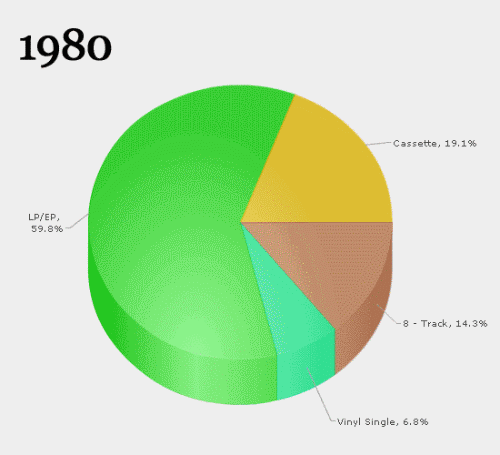
Four stories that jumped out at me today:
"Caterpillar expanding China operations," Crain‘s
"GE Moves 115-Year-Old X-Ray Unit’s Base to China to Tap Growth," Bloomberg
"Deere quarterly profit rises 15% on international demand," Reuters
"Groupon Stumbles in China, Closes Some Offices," Wall Street Journal
Now, you may be looking at the first two and thinking, "same old thing, U.S. companies offshoring Midwestern jobs so we can ship our products back to us while saving on labor costs" (the GE X-Ray unit is based in Waukesha). But that’s not what’s happening: GE and Caterpillar are increasing their operations in China to build products for the Chinese market. For instance, from the Bloomberg report:
The division should have “double-digit” growth rates as the country converts from film and analog to digital X-ray technology, LeGrand said. “When you look at a market like China, it’s primarily analog. So we feel this will also bring digital technology at an appropriate price-point."
The Peoria, Ill., tractor maker said Wednesday its finance arm sold 1 billion renminbi ($150 million) worth of medium term notes to institutional investors in Hong Kong.
This is a somewhat neglected idea when it comes to explanations of why U.S. corporations are still doing very well in one of the worst (domestic) economies of the past century. U.S. companies are hiring and selling, but they’re selling in foreign markets and hiring workers in those same markets:
More than half of the 15,000 people that Caterpillar Inc. has hired this year were outside the U.S. UPS is also hiring at a faster clip overseas. For both companies, sales in international markets are growing at least twice as fast as domestically.
And it goes some of the way towards explaining the particular difficulty of this Great [take your pick]:
The reason this time is so painful is because there is a dearth of jobs, not value. Why people care so much about jobs is a complex story. But the important point for now is that jobs are the issue, not the creation of value.
That last post is interesting—it has some problems, as illuminated in the comments, but it’s still worth reading. America is still creating value, but much of that value is spread out overseas rather than concentrated in the domestic economy.
Which ties into a point Tyler Cowen made in his recent book The Great Stagnation:
The basic thesis of the book is that advanced economies are slowing down because the pace of innovation is slowing down (you can read a shorter version of the argument in this op-ed from Cowen). This isn’t because we’re getting dumber, or because constant nuclear wars are distracting scientists. It’s because in the 20th century, we benefited from, in Cowen’s words, a lot of "low-hanging fruit" before, and that fruit is basically picked. You can only move your smartest people from the farm to the school system once, after all. As for China and India? Glad you asked. They’re mostly picking the same fruit we’ve picked — and grown — over the past century or so, bringing electricity and schooling and modern medicine and management techniques to people who never had them before.
I read the first volume of Robert Caro’s LBJ biography not long ago, and my favorite chapter—one shared by friends who’ve read it—is the one about women’s housework in West Texas in the early-but-not-actually-that-early 20th century. It was staggeringly laborious and primitive. You know the phrase "irons in the fire"? Women kept several heavy, hot irons heating up, swapping them out while pressing crisp white shirts for their husbands. I can’t think of a better portrait of an economy primed to explode: using preposterously basic technology to not look poor. Now the place to find such an immense gap is overseas. Heck, even our absurdly larded cookies are coming from elsewhere.
Cowen also writes about how the Internet economy hasn’t gotten to the point where it employs that many people, comparatively speaking, if it ever will. Which reminded me of a neat graph someone shared with me this morning, about the evolution of music media over the past 30 years:

It goes by pretty quick, but here’s the gist: up through about 2004, 98 percent of all music had to be physically manufactured and physically distributed (not 100 if you count music videos, though those obviously have production costs). Once you get to 2010, about half of music by record sales is digital, whether it’s downloads, mobile, or subscription streaming. That involves infrastructure and programming, of course, but not manufacturing or physical distribution.
Speaking of buying things off the internet, that brings me back to the Groupon news. If you want to get a good sense of what happened, Steve Hendershot wrote an excellent piece in Crain’s last August Monday that described what Groupon was up against in China:
But Groupon was slow in building a Chinese presence, and by the time its site, GaoPeng.com, launched there in February, the market was cluttered with more than a thousand rivals. GaoPeng now hovers on the outskirts of China’s top-10 daily-deal sites.
[snip]
The Chinese daily-deal market “is like the Oklahoma land grab, and Groupon is quite late to the party. They came in and expected prime land by a babbling brook, but they just got the panhandle,” says Scott Silverman, Beijing-based regional director for the Asian operations of San Francisco ad agency Godfrey Q & Partners LLC.
It’s pretty amazing, if you think about it: Groupon’s competition is still taking hold here in the U.S., but by the time the company launched in China last February, it had over a thousand competitors.
Photograph: Martin Pettitt (CC by 2.0)


